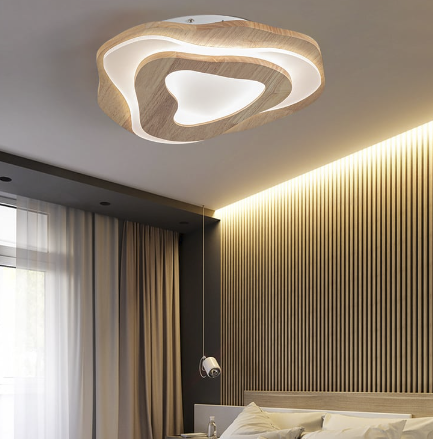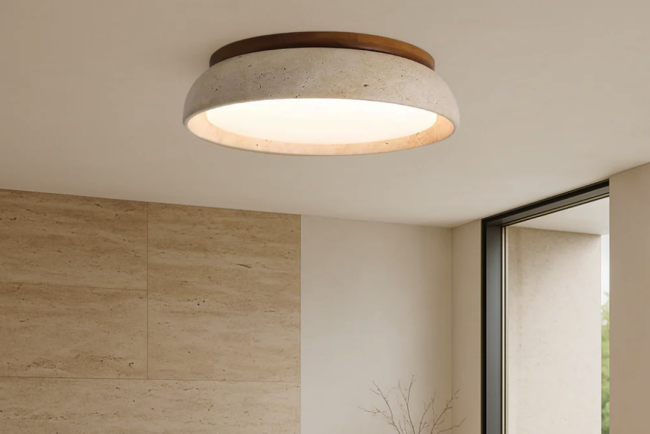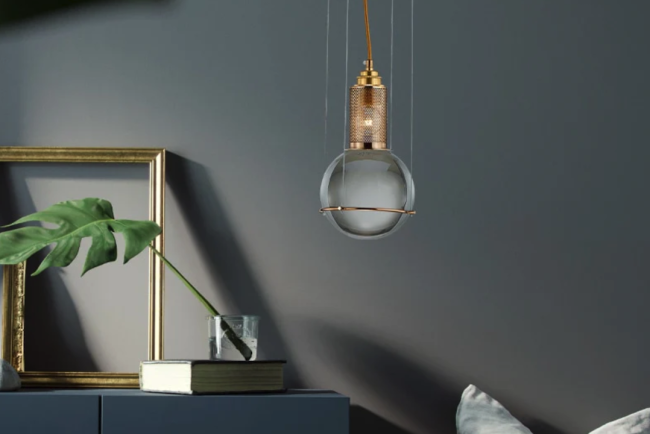
LED ceiling lights have revolutionized the way we illuminate our living and working spaces. Unlike traditional incandescent or fluorescent lighting, LED (Light Emitting Diode) technology offers a more efficient and versatile solution for overhead illumination. At their core, LED lights operate by passing an electric current through a semiconductor, which then emits light.
This process not only consumes significantly less energy but also results in a longer lifespan, often lasting up to 25,000 hours or more. As a result, LED ceiling lights have become increasingly popular in both residential and commercial settings, providing a sustainable alternative that aligns with modern energy-conscious values. Moreover, the design of LED ceiling lights has evolved dramatically over the years.
They are now available in a myriad of styles, shapes, and sizes, making them suitable for any aesthetic preference or functional requirement. From sleek, minimalist designs that complement contemporary interiors to ornate fixtures that enhance traditional decor, the versatility of LED ceiling lights Ilonalighting is unmatched. Additionally, many LED options come with adjustable brightness and color temperature settings, allowing users to customize their lighting experience according to the time of day or specific activities.
This adaptability not only enhances comfort but also contributes to the overall ambiance of a space, making LED ceiling lights an essential component of modern interior design.
Benefits of Upgrading to LED Ceiling Lights
Energy Efficiency and Cost Savings
Transitioning to LED ceiling lights offers numerous benefits that extend beyond mere aesthetics. One of the most compelling advantages is their energy efficiency. Compared to traditional lighting options, LEDs consume up to 80% less energy while providing the same level of brightness. This significant reduction in energy consumption translates into lower electricity bills, making LED lights a financially savvy choice for homeowners and businesses alike.
Environmental Benefits of LED Lighting
In addition to cost savings, LED ceiling lights are also environmentally friendly. Their reduced energy consumption means a lower carbon footprint, contributing to global efforts to combat climate change. Moreover, LEDs do not contain harmful substances like mercury, which is commonly found in fluorescent bulbs. This makes them safer for both human health and the environment when it comes time for disposal.
Long-Term Sustainability
The longevity of LED lights further enhances their eco-friendliness; fewer replacements mean less waste in landfills and reduced demand for manufacturing new bulbs. As energy costs continue to rise, the long-term savings associated with LED lighting become increasingly appealing, allowing individuals to allocate their resources more effectively. By choosing LED ceiling lights, consumers are not only making a smart financial decision but also taking a step toward a more sustainable future.
Choosing the Right LED Ceiling Lights for Your Space
Selecting the appropriate LED ceiling lights for your space involves careful consideration of various factors that can influence both functionality and aesthetics. First and foremost, it is essential to assess the size and layout of the room where the lighting will be installed. Larger spaces may require multiple fixtures or more powerful options to ensure adequate illumination, while smaller rooms might benefit from compact designs that provide focused light without overwhelming the area.
Additionally, the height of the ceiling plays a crucial role; higher ceilings may necessitate pendant or chandelier-style fixtures that can distribute light more effectively. Another critical aspect to consider is the color temperature of the LED lights. Measured in Kelvin (K), color temperature can significantly impact the mood and functionality of a space.
For instance, warmer tones (around 2700K to 3000K) create a cozy and inviting atmosphere, making them ideal for living rooms and bedrooms. In contrast, cooler tones (above 4000K) are better suited for workspaces or kitchens where bright, clear light is essential for tasks requiring focus and precision. Additionally, consider whether you want dimmable options that allow you to adjust brightness levels according to your needs.
By thoughtfully evaluating these factors, you can select LED ceiling lights that not only illuminate your space effectively but also enhance its overall character.
Installation and Maintenance of LED Ceiling Lights
The installation of LED ceiling lights can vary in complexity depending on the type of fixture chosen and the existing electrical setup in your space. For those who are comfortable with basic electrical work, many LED fixtures come with straightforward installation instructions that can be completed with minimal tools. However, if you are unfamiliar with electrical systems or if your installation requires modifications to existing wiring, it is advisable to consult a licensed electrician.
Professional installation ensures that your lighting is safely and correctly set up while also adhering to local building codes. Once installed, maintaining LED ceiling lights is relatively simple compared to traditional lighting options. One of the key advantages of LEDs is their durability; they are less prone to breakage and do not require frequent bulb replacements.
However, regular cleaning is essential to maintain optimal performance and appearance. Dust and grime can accumulate on fixtures over time, diminishing their brightness and overall aesthetic appeal. A gentle wipe with a soft cloth or a mild cleaning solution can help keep your LED ceiling lights looking their best.
Additionally, it’s wise to periodically check for any signs of flickering or dimming, which could indicate an issue with the fixture or electrical connections that may need addressing.
Enhancing Your Décor with LED Ceiling Lights
LED ceiling lights offer an exceptional opportunity to enhance your décor while providing functional illumination. The wide variety of designs available means that you can find fixtures that seamlessly integrate with your existing interior style or even serve as statement pieces that draw attention. For instance, sleek recessed lighting can create a modern look while providing unobtrusive illumination, perfect for minimalist spaces.
On the other hand, decorative chandeliers or pendant lights can add a touch of elegance and sophistication to dining areas or entryways. Moreover, the ability to adjust brightness and color temperature allows you to tailor your lighting to suit different occasions or moods. Dimming capabilities can transform a bright workspace into a cozy setting for entertaining guests or relaxing after a long day.
Additionally, using multiple light sources within a room can create layers of light that enhance depth and dimension in your décor. By strategically placing LED ceiling lights alongside other lighting elements such as floor lamps or wall sconces, you can achieve a well-balanced and inviting atmosphere that elevates your overall design aesthetic.
Energy Efficiency and Cost Savings with LED Ceiling Lights
Energy Efficiency and Sustainability
The energy efficiency of LED ceiling lights is one of their most significant advantages, particularly in today’s era where sustainability is a top priority for consumers. By consuming significantly less electricity than traditional incandescent or fluorescent bulbs, LEDs contribute to substantial energy savings over time. This efficiency not only benefits individual households but also has broader implications for reducing overall energy demand on a national scale.
Environmental Benefits and Cost Savings
As more consumers make the switch to LED lighting, the cumulative effect can lead to decreased reliance on fossil fuels and lower greenhouse gas emissions. In terms of cost savings, the financial benefits of upgrading to LED ceiling lights are compelling. While the initial investment may be higher than traditional lighting options, the long lifespan of LEDs—often exceeding 25,000 hours—means fewer replacements and lower maintenance costs over time.
Additional Incentives and Long-Term Benefits
Additionally, many utility companies offer rebates or incentives for consumers who choose energy-efficient lighting solutions like LEDs, further offsetting initial expenses. When considering both energy savings and reduced replacement costs, it becomes clear that investing in LED ceiling lights is not only an environmentally responsible choice but also a financially prudent one.
Tips for Maximizing the Impact of LED Ceiling Lights in Your Space
To truly maximize the impact of LED ceiling lights in your space, consider employing a layered lighting approach that combines various types of lighting sources for optimal effect. This strategy involves integrating ambient lighting from ceiling fixtures with task lighting from lamps or under-cabinet lights and accent lighting from wall sconces or decorative fixtures. By creating layers of light, you can enhance functionality while also adding depth and interest to your décor.
Additionally, don’t underestimate the power of dimmers and smart lighting controls when it comes to maximizing your LED ceiling lights’ potential. Dimming capabilities allow you to adjust brightness levels based on specific activities or times of day, creating an adaptable environment that suits your needs perfectly. Smart lighting systems take this a step further by enabling you to control your lights remotely via smartphone apps or voice commands.
This level of control not only enhances convenience but also allows you to experiment with different lighting scenarios that can transform your space at the touch of a button. By thoughtfully considering how you use light in your home or office, you can create an inviting atmosphere that reflects your personal style while maximizing the benefits of LED technology.














